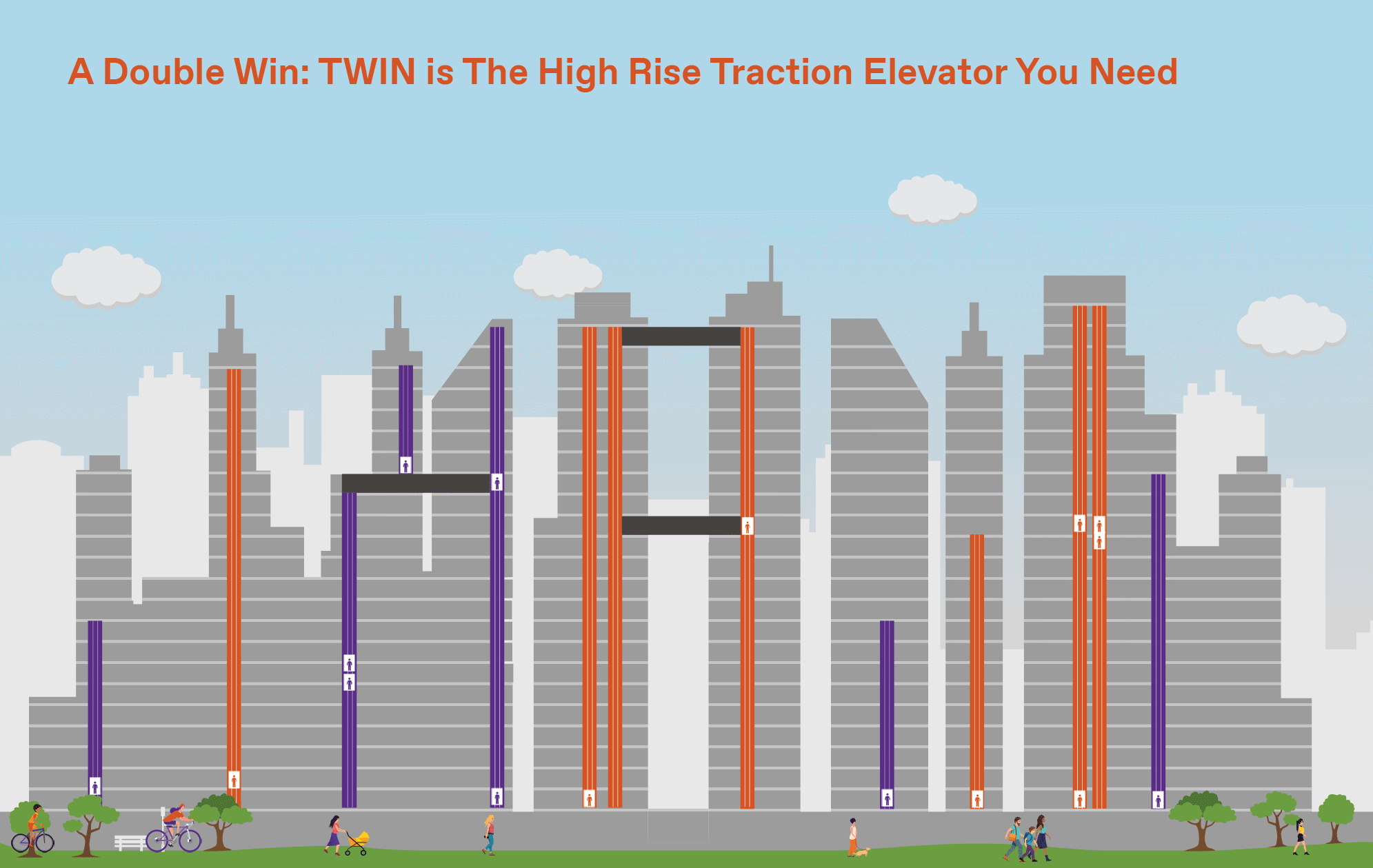High in the Sky: What to Look for in Your Next High-Rise Elevator
Thousands of tourists and travelers come from all over the world to visit cities with notable skyscrapers. In Manhattan, the One World Trade Center, the Empire State Building and the Chrysler Building are seen as iconic fixtures of the city. It’s hard to imagine a world where buildings like these don’t fill the skyline, but for anyone born prior to 1854, that was just the reality.
It wasn’t until the debut of the first passenger-safe elevator at the World’s Fair that buildings began to grow in height. Before this time period, the lower-level floors in a building were rented out to only the wealthiest tenants. Penthouses overlooking the city weren’t seen as advantageous as they are now since there was no easy way to access the higher floors, and tenants would have to walk up several flights of stairs to get to their homes.
With the invention of high-rise traction elevators, the sky is no limit. Innovation in engineering has led us to move beyond what was previously thought to be impossible. Buildings like the One World Trade Center which stand at 1,776 feet have observation decks full of people who arrived at the top in mere minutes. Sleek and modern elevators are commonplace in the 21st century, but what should you look for in your next high-rise elevator?

Advanced Safety Features
The number one priority when considering which elevator to choose is safety. Our entire industry is built on furthering safety for our passengers, and your elevator should reflect that value. While high-rise traction technology is incredibly safe, we believe that it can always be safer with advanced safety features.
Some of those might include Occupant Evacuation Operation which allows for a faster evacuation method than stairwells in the event of a building emergency. Another would be a battery auto-rescue operation for passengers who want to safely exit the elevator cab during a power outage.
Both of these and more features, like elevator monitoring and precise floor-leveling, are the first on the list when looking for your next high-rise traction elevator.
Efficient Machine Room
Critical parts like the controller, drive sheave and geared or gearless machine are housed in the machine room. Since these core components are kept in the machine room, it’s of the utmost importance to look for a high-rise traction elevator designed with efficiency in mind.
All high-rise traction elevators require their own separate machine room because of the large equipment needed to pull the elevator cab up many floors at an accelerated speed. The first thing to secure is a gearless machine, as they provide high performance, increased efficiency and reduced energy consumption. Gearless machines are also much easier for technicians to service, which results in less downtime.
The controller is the brain of the elevator system, so having one that can work under any condition will increase its dependability. Investing in a powerful controller that uses solid-state technology will add to the reliability of your high-rise traction elevator.
As far as savings go, you’ll want to look into ensuring you have a regenerative drive to capture unused energy and feed it back into your building’s power grid.
Contemporary Design
The design of your elevator can be completely unique to you. While there are some factors you can’t control based on ASME 1.17 Code guidelines, the interior of the cab can be customized to fit into your building seamlessly.
Everything from the floors to the LED lights and the wall finishes are up to you. In this day and age, the aesthetic of a building can affect passenger experience greatly. We recommend taking your time when deciding on your cab interior, as it can make a huge difference to those who ride in it frequently.
Modern High-Rise Elevators Have Arrived
The final factor to look for in your new high-rise traction is a solution that aids in passenger flow. TK Elevator’s innovative TWIN is a one-of-a-kind elevator system with two cabs in one hoistway. Since both cabs use the same guide rails and landing doors, this high-rise elevator can move people to their destinations twice as fast while saving you 25% more space.
TWIN comes with an intelligent destination dispatching system called AGILE which groups your passengers together based on the floors they are traveling to. This allows for handling larger amounts of traffic with fewer tenants waiting in the lobby for their elevator. Reducing the number of shafts you need also saves you money with less construction and floor space.
Learn more more about TK Elevator’s high-rise traction elevator systems like momentum or TWIN here. If you’d like to hear more about what these elevators can do for your building, please contact your local branch manager.
 United States
United States

